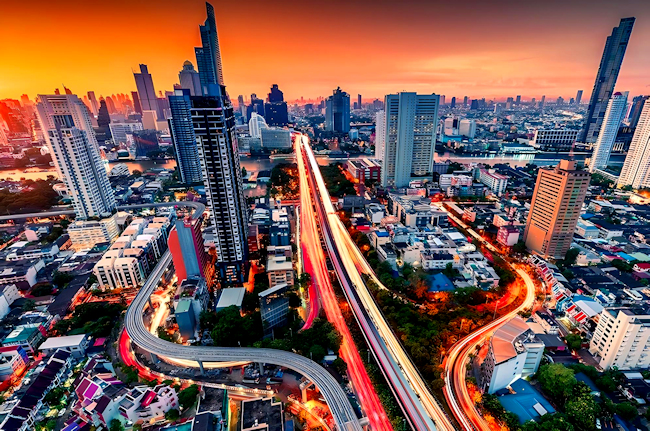A new “Bangkok Index” compiled by Rocket Media Lab has offered a revealing snapshot of liveability across the 50 districts of the Thai capital, ranking areas based on a range of environmental and well-being factors.
The index aims to provide a deeper understanding of the city beyond its cultural and economic vibrancy, exposing the underlying structural issues that impact residents’ quality of life, from public services and economic inequality to urban disasters and the environmental crisis.
To paint a clearer picture of living standards in different parts of the city, Rocket Media Lab, a public data initiative focused on social issues, undertook the Bangkok Index 2024 project.
By analysing data from all 50 of Bangkok’s districts, the index seeks to establish an evidence-based resource for informing policy and proposing targeted solutions to local challenges.
The ultimate goal is to assess the overall livability of each district and pinpoint specific areas requiring improvement.
The Bangkok Liveability Index scores districts based on four key areas, each with four sub-categories:
Public Services: Including public health, public transport, education, and overall quality of life.
Economy: Encompassing district budgets, tax revenue, business registrations, and food establishments.
Well-being: Covering fire incidents, flooding, crime hotspots, and road accidents.
Environment: Assessing waste management, wastewater treatment, air quality, and public parks.
Within each sub-category, the 50 districts are ranked and awarded points from 1 (least good) to 50 (best). Districts with the same ranking receive the same score.
These scores are then averaged for each sub-category and main area, culminating in an overall average score across all four areas to determine the final livability ranking for all 50 districts.
The 2024 Bangkok Index reveals that Phra Nakhon district emerged as the most livable, with an average score of 35.08 out of 50. It scored highest in the economic category (41.56 points), attributed to its substantial district budget and a high number of food establishments compared to other areas.
Following closely were Pom Prap Sattru Phai (35.05), Pathum Wan (34.76), Samphanthawong (33.42), and Ratchathewi (32.40).
At the other end of the spectrum, Nong Khaem district recorded the lowest liveability score, averaging just 13.81 out of 50.
Its public services score was particularly low (8.31 points), reflecting lower rates of teachers and schools per capita, public health facilities per capita, public transport availability, and quality of life promotion facilities compared to other districts.
Trailing behind Nong Khaem were Bang Khae (16.76), Sai Mai (17.47), Bang Khun Thian (18.13), and Thung Khru (19.55).
The index highlights a trend where districts with higher liveability scores are generally concentrated in inner Bangkok, which tend to be economic hubs with greater financial resources for infrastructure development relative to their population.
Conversely, districts with lower liveability scores are predominantly located in outer and middle Bangkok, scoring lower in public services and the economy when adjusted for population size.
A look at the bottom of the rankings reveals:
10 Districts with the Worst Environmental Problems: Bang Na, Wang Thonglang, Bang Rak, Din Daeng, Khlong Toei, Pathum Wan, Khlong San, Watthana, Yannawa, Bang Phlat.
10 Districts with the Worst Well-being: Chatuchak, Wang Thonglang, Bang Kapi, Bang Khun Thian, Bang Khae, Thung Khru, Lat Phrao, Nong Khaem, Bang Na, Bueng Kum.
Source: Nation Multimedia



